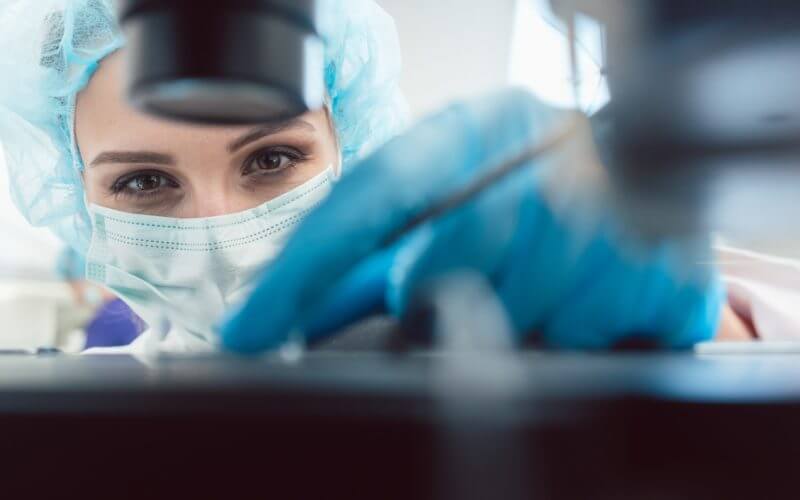Superbugs and Failing Drugs

You’ve read the headlines. Superbugs are harming and even killing more people than ever. And we’re running out of drugs for the infections they cause. But what are these superbugs, where did they come from and just how widespread are they? Most importantly, what can be done?
Antibiotics are among the most commonly prescribed drugs for people. Superbugs is an informal term for some bacteria that have become resistant to these drugs. Antibiotics are effective against bacterial infections, such as life threating bloodstream infections, lung infections like pneumonia and bronchitis, urinary tract infections, skin and sexually transmitted infections, diarrheal diseases and more. These drugs don’t work against viruses, such as those causing colds, flu or COVID-19.
Superbugs are strains of bacteria that are resistant to several types of antibiotics. The World Health Organization has identified these drug-resistant superbugs as among the biggest threats to global health.
What are superbugs and where do they come from?
How have some superbug strains become resistant to drugs? The more people are exposed to antibiotics when they don’t need them, the more likely it is that resistance will emerge.
Here’s the science of how that happens. Bacteria are microscopic, single-celled organisms. They live in and on every environment, including the soil, ocean, plants, animals and human body. Most bacteria in our body are harmless, or serve an important purpose, such as digesting food. They also help to prevent disease by making the body less hospitable to harmful bacteria. When harmful bacteria break through the body’s defences and begin to multiply, they can cause an infection.
Antibiotics kill or stop bacteria growing. But a small number of bacteria naturally become drug-resistant. When repeatedly exposed to different types of antibiotics, susceptible bacteria die, leaving behind the drug-resistant bacteria to multiply. These superbugs can reach huge numbers within one day and can be easily spread to other people.
Over time, if more and more people take antibiotics when not needed, or the wrong drugs at the wrong dose and time, the drug-resistant bacteria left behind can flourish and even share their drug-resistant traits with other bacteria. Over time, many different antibiotics become less effective and sometimes stop working against these superbugs.

How many types of superbugs are there?
Superbugs are found in all parts of the world. Infections they cause, such as pneumonia, blood stream infections, gonorrhoea, urinary tract infections, skin disorders and foodborne disease, are becoming harder, and sometimes impossible, to treat. It is estimated that globally, at least 1.2 million people die every year as a result of drug-resistant infections. Without urgent action, this number will increase.
The World Health Organization (WHO) has identified a list of 12 families of drug-resistant superbugs that represent the greatest threat to health and urgently require new treatments.
Three bacteria are identified by the WHO as being a critical priority for new treatments:
- Acinetobacter baumannii are often difficult to teat and resistant to a class of antibiotics called carbapenems. They can cause a range of infections for hospitalized people, including pneumonia, wound and blood infections.
- Pseudomonas aeruginosa are also difficult to treat and resistant to carbapenems. This family of superbugs can cause lung infections, severe blood infections, pneumonia and infect burn wounds.
- Enterobacterales is a family of bacteria that often live in the intestinal tracts of animals and are resistant to both carbapenems and another important class of antibiotics, extended-spectrum cephalosporins. They are easily spread and a common cause of urinary tract and bloodstream infections in hospitalized people.
The other bacterial superbug families identified on the WHO list are:
High priority:
- Neisseria gonorrhoeae, cephalosporin-resistant, fluoroquinolone-resistant
- Salmonellae, fluoroquinolone-resistant
- Enterococcus faecium, vancomycin-resistant
- Staphylococcus aureus, methicillin-resistant, vancomycin-intermediate and resistant
- Helicobacter pylori, clarithromycin-resistant
- Campylobacter spp., fluoroquinolone-resistant
Medium priority:
- Streptococcus pneumoniae, penicillin-non-susceptible
- Haemophilus influenzae, ampicillin-resistant
- Shigella spp., fluoroquinolone-resistant
Developing treatments to transform and save lives
Addressing the superbug crisis
What can be done to tackle the superbugs crisis? On an individual level, only use antibiotics when prescribed by a certified health professional. And make sure you closely follow guidance on when and for how long to take the drugs. Never share your antibiotics with anyone else or ask for antibiotics if you’ve been told you don’t need them. You can also prevent infections by regularly washing hands, preparing food hygienically, avoiding close contact with sick people, practising safe sex and keeping vaccinations up to date.
That is one part of the solution. Because bacteria evolve over time, we also need to be working on new antibiotics. This is where the Global Antibiotic Research and Development Partnership (GARDP) comes in. GARDP is working to accelerate the development of treatments for drug-resistant infections on the WHO priority pathogens list. GARDP also works to ensure these treatments are responsibly available for every person who needs them, wherever they live.
GARDP mobilizes resources and partners to develop lifesaving and lifechanging treatments for the drug-resistant bacterial infections that pose the greatest threat to global health. In partnership with governments, the private sector, research institutions and civil society, we are embracing innovative solutions to one of the greatest health challenges of our time.



